Many won’t be familiar with their high-end products, but this TEAC VRDS-10 CD player is an absolute gem. Let’s take a look.
The TEAC VRDS-10 is a very serious CD player from around 30 years ago now. Utilising the venerable Sony KSS-151A laser mech and a custom, heavy-duty direct-drive CD motor and chassis, the VRDS-10 means business. In this article, we repair and service this old girl.
Something to consider: this CD player still works, using her original laser, some 30 years after manufacture. I really cannot overstate this, because many new players last around 2 – 5 years. Anyway, don’t forget to check out my accompanying video on YouTube:
The Good, the Bad & the Ugly
There’s much to love about the TEAC VRDS-10 and not much not to. Starting with the good, the build is fantastic, 10kg of metal, very little plastic. The machine is serviceable and built to last. The Sony KSS-151A laser is legendary for its performance and reliability and the loader is built like a tank. This machine will last, no doubt about it.
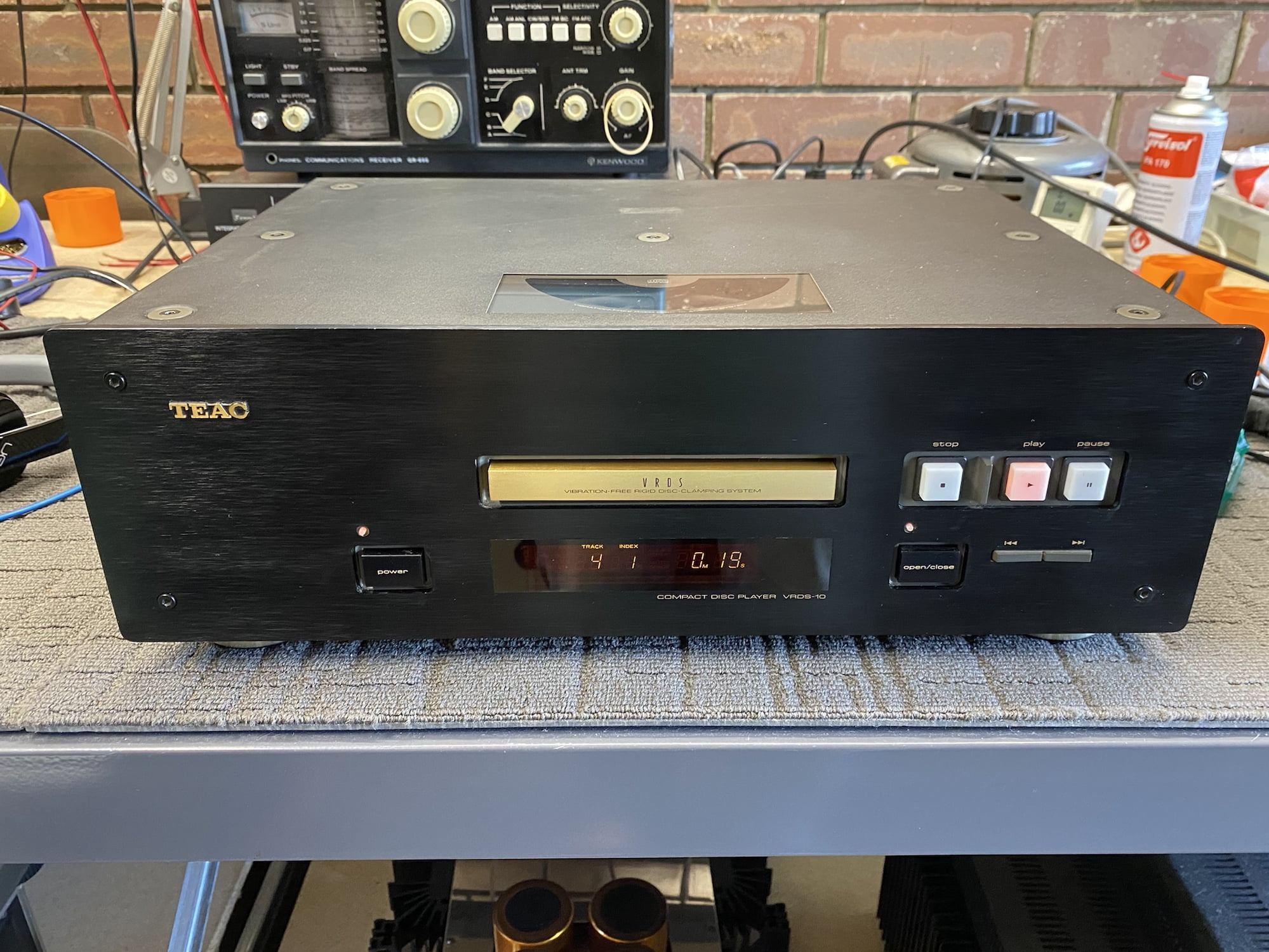
In terms of the bad, the DAC chips used here are the relatively ordinary Philips TDA1547, one of the first bitstream chips and, in my opinion, not a great-sounding one. Note however that opinions on this vary and the overall machine design is more important than the DAC chips used.
The boards have somewhat flimsy traces, not Sony ES or Accuphase grade. The loader uses two drive belts, one of which is easy to access and the other not. That’s it though, overall a great machine. Thankfully, there is no ugly with the VRDS-10.
Keep in mind that this was a premium player at the time of sale. Costing GBP £769, roughly $1150 USD or $2000 AUD, and that’s in 1993! This VRDS-10 still sounds excellent, no doubt a result of good overall design, so don’t be put off by its age if you find one in good condition.
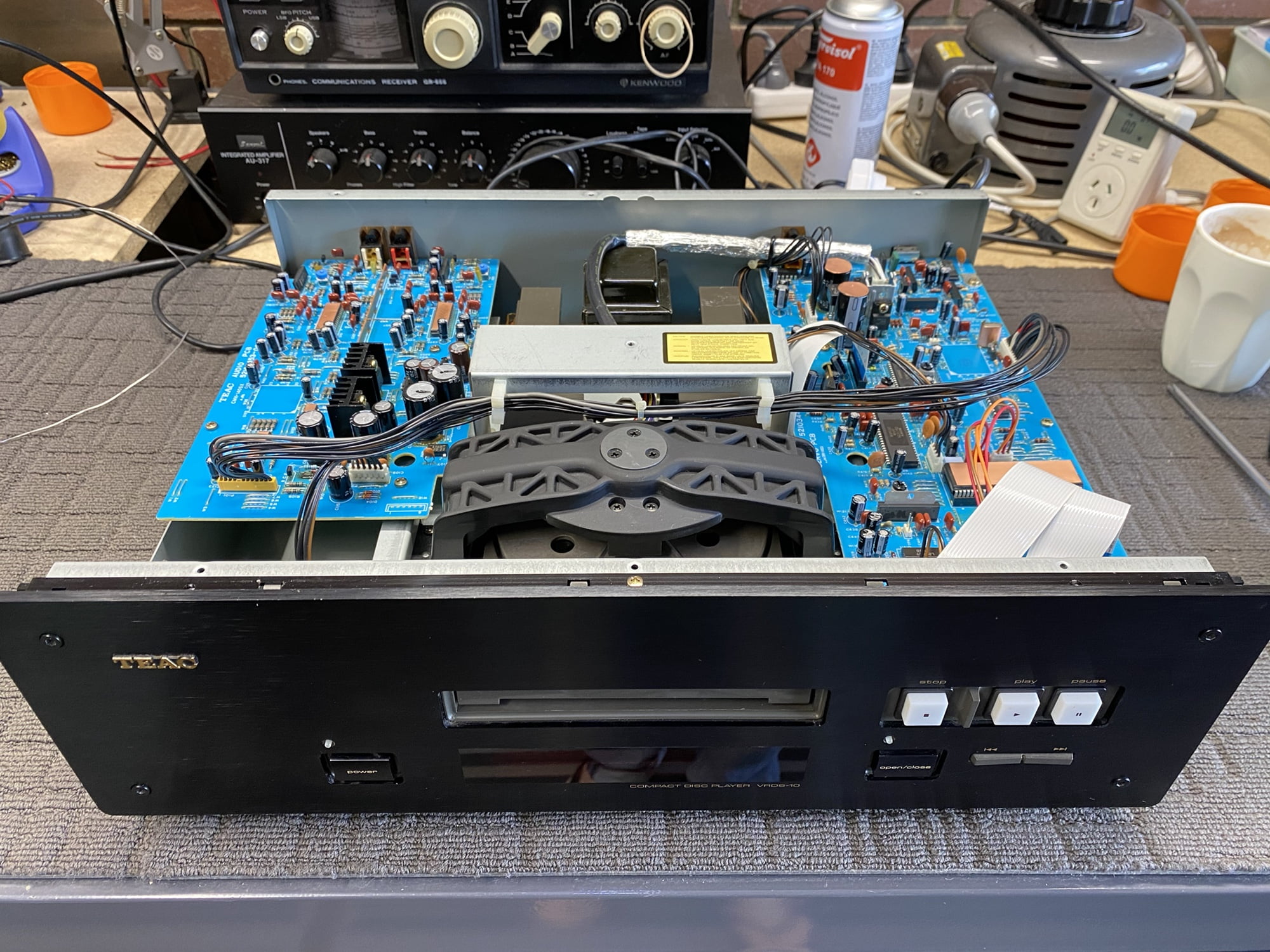
Specifications, courtesy of HiFi Engine
Disc format: CD
Digital converter: 2 x TDA1547, bitstream, 8 x oversampling
CD Mechanism: KSS-151A
Frequency response: 1Hz to 20kHz
Dynamic range: 99dB
Signal to Noise Ratio: 110dB
Channel separation: 110dB
Total harmonic distortion: 0.0013%
Line output: 2.2V
Digital outputs: coaxial, optical
Dimensions: 442 x 149 x 331mm
Weight: 10kg
Accessories: RC-481 remote control
Year: 1992
Price: GBP £769 (1993)
Problems with this TEAC VRDS-10
If you visit regularly you’ll know I enjoy CD player repairs. Not all machines can be viably repaired of course, but this one certainly could.
This TEAC VRDS-10 came to me jammed up with a disc stuck inside and a history of not playing or running reliably. Inspection revealed the need for a full mech-out mechanical service and a board-level repair to the analog power supply.
Most of these machines have a resistor that gets too hot, the solution is not to change the value but to replace it and mount the part in such a way that it radiates heat more effectively, i.e. off the board rather than hugging it.
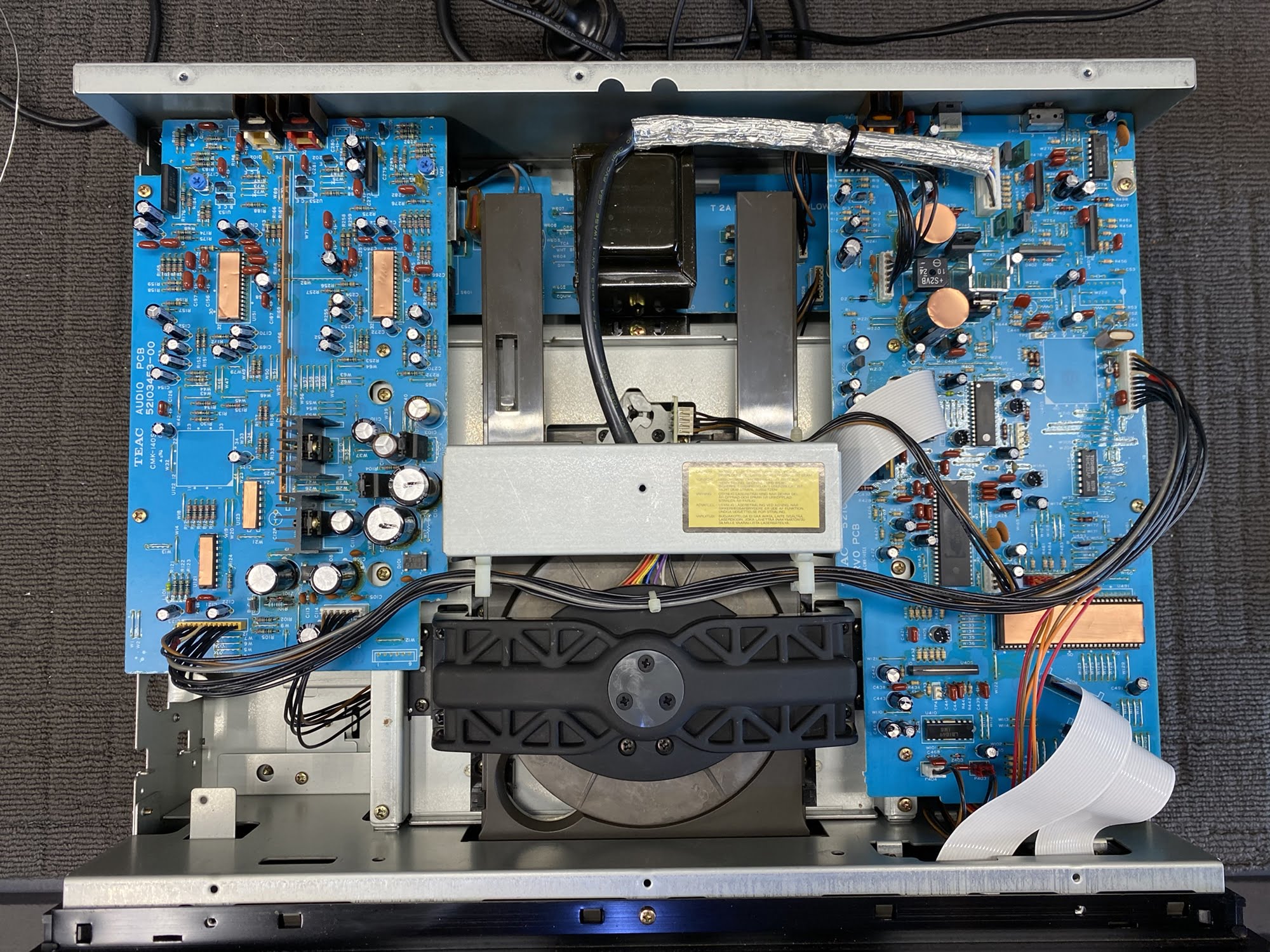
Repair & Service
This VRDS-10 needed a full mechanical service and board repair, so let’s dig in. First I repaired the power supply issue.
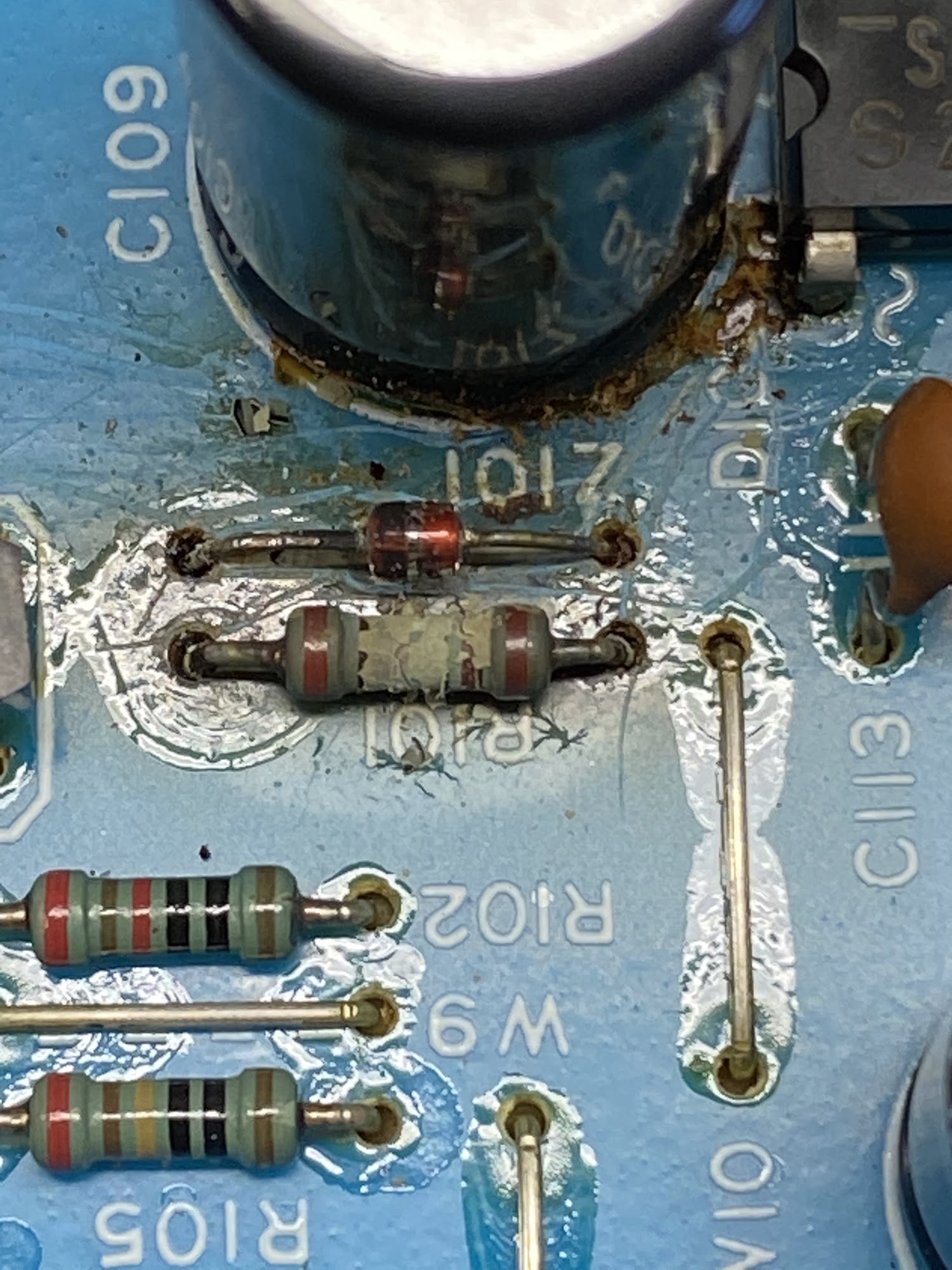
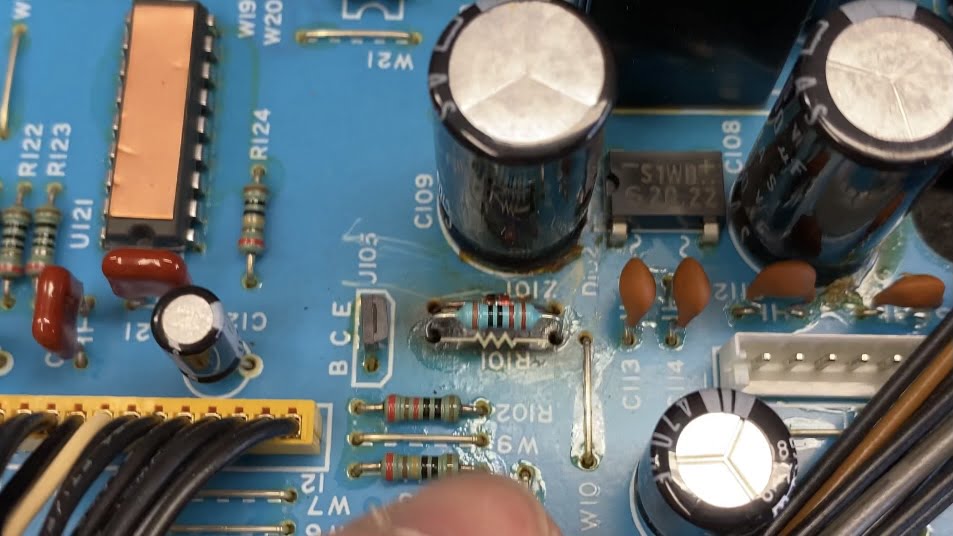
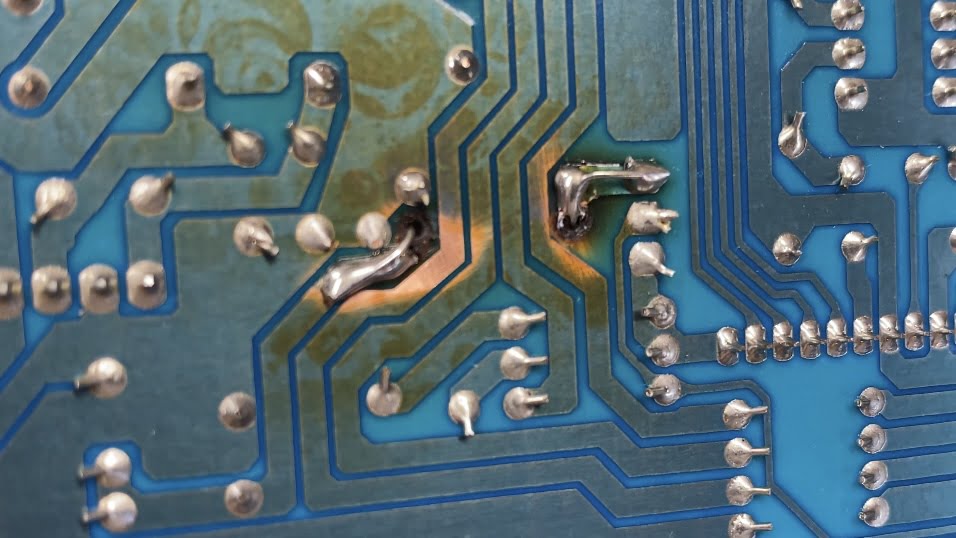
Mechanical Work
Next, I focussed on the loader. These machines suffer from worn drive belts as all CD players do. Reduced belt efficiency and diminished lubricant lead to excessive friction in the loader mech, causing the drive not to actuate the limit switches, causing player confusion and operational issues.
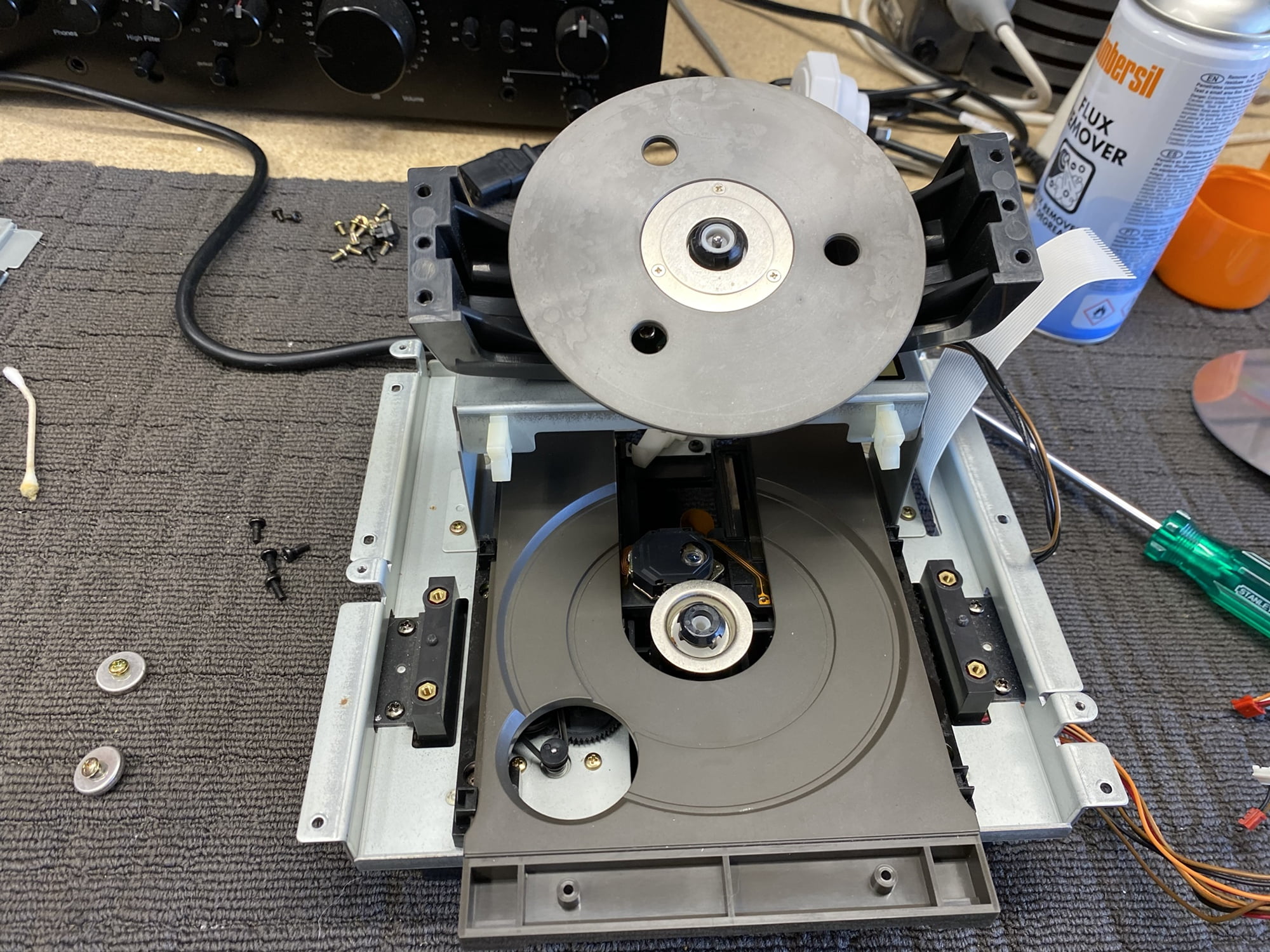
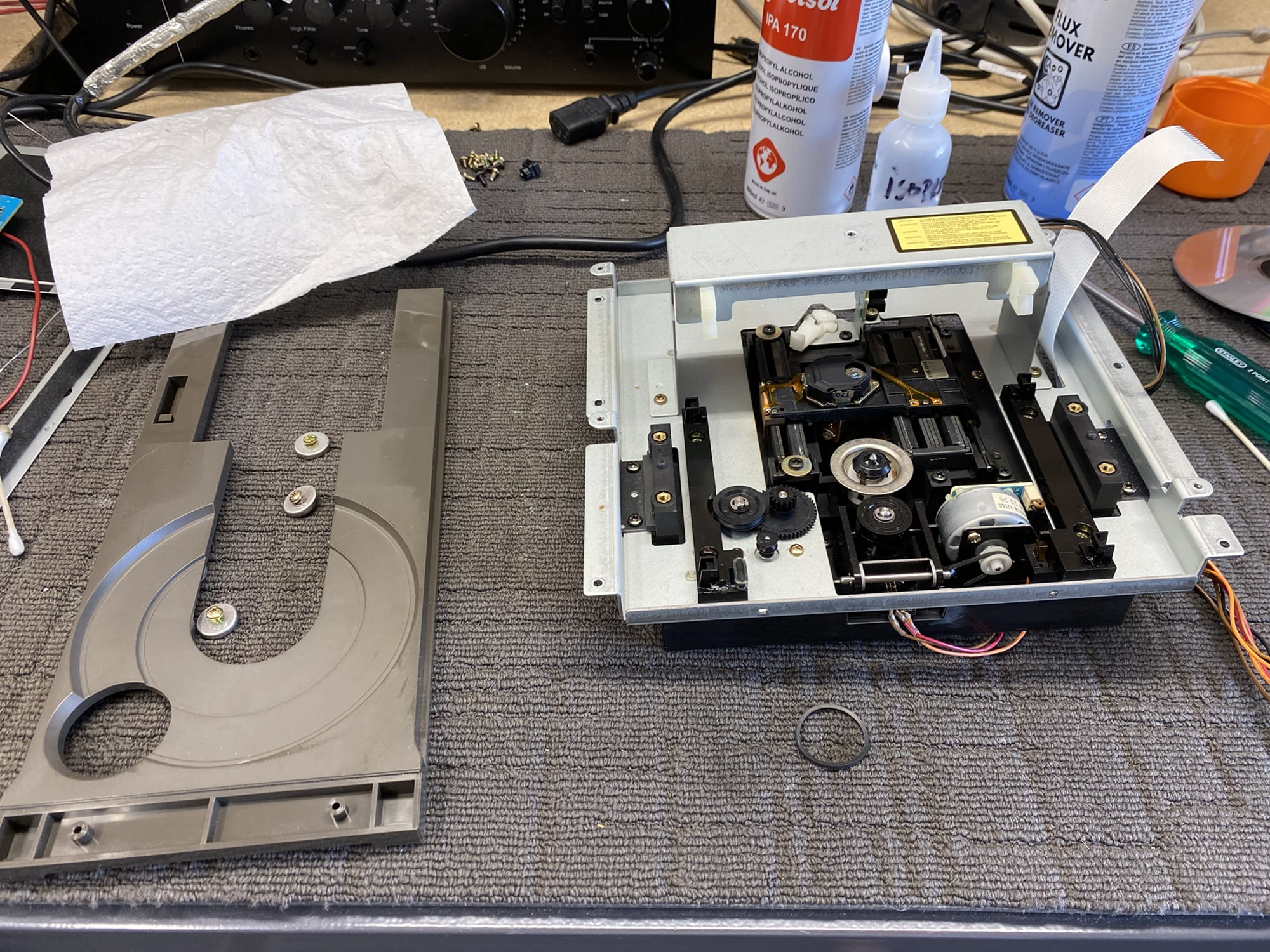
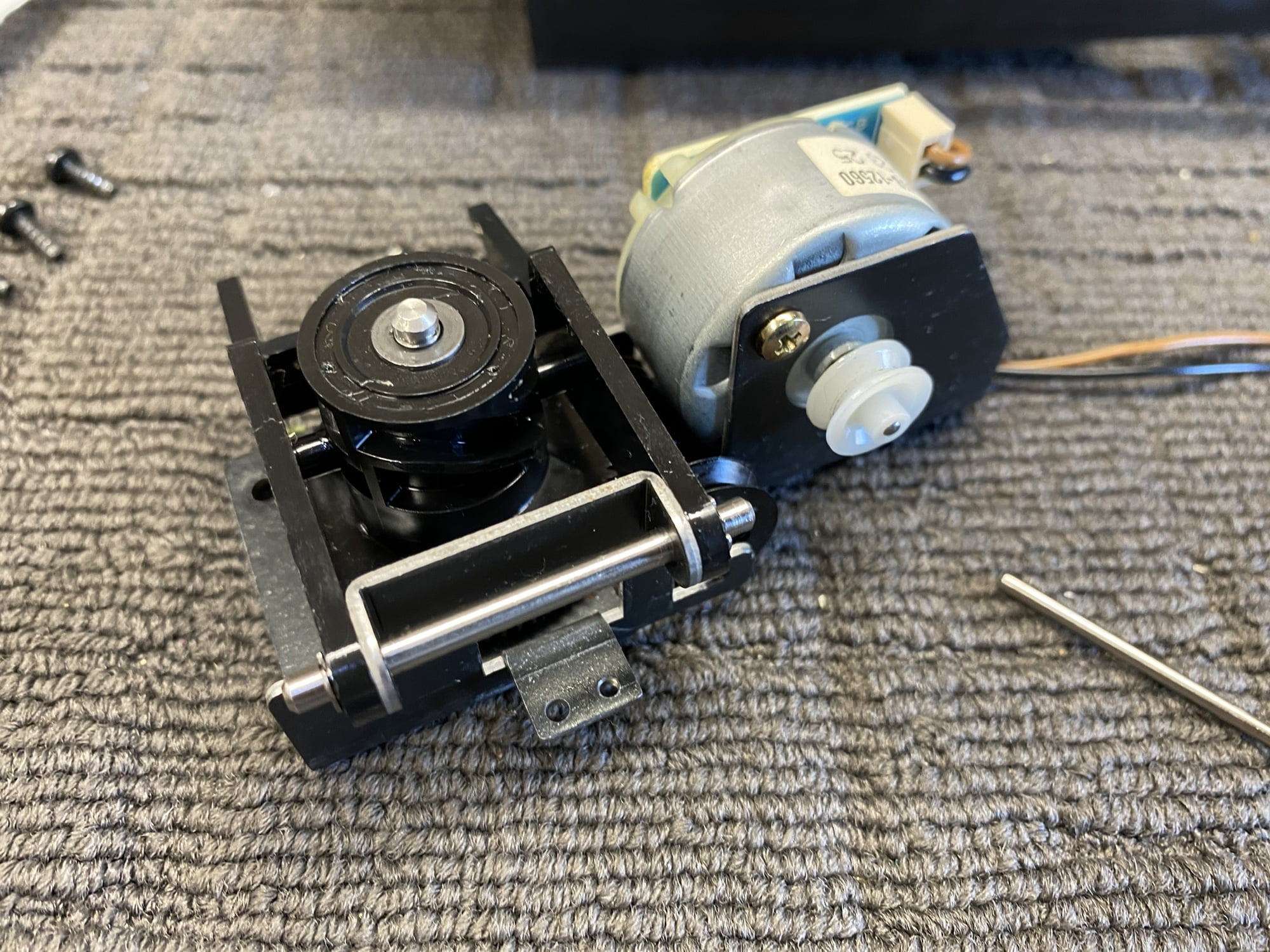
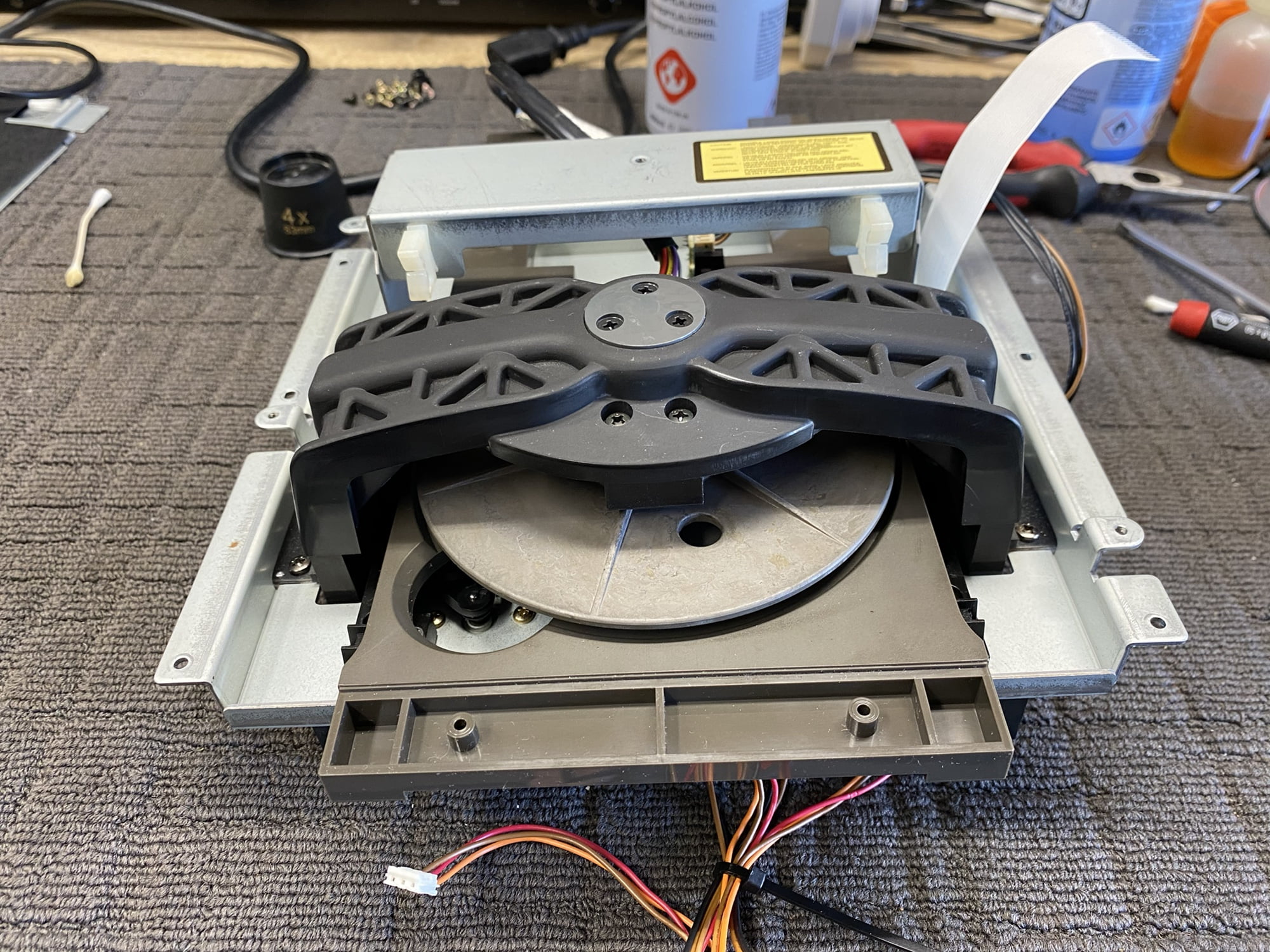
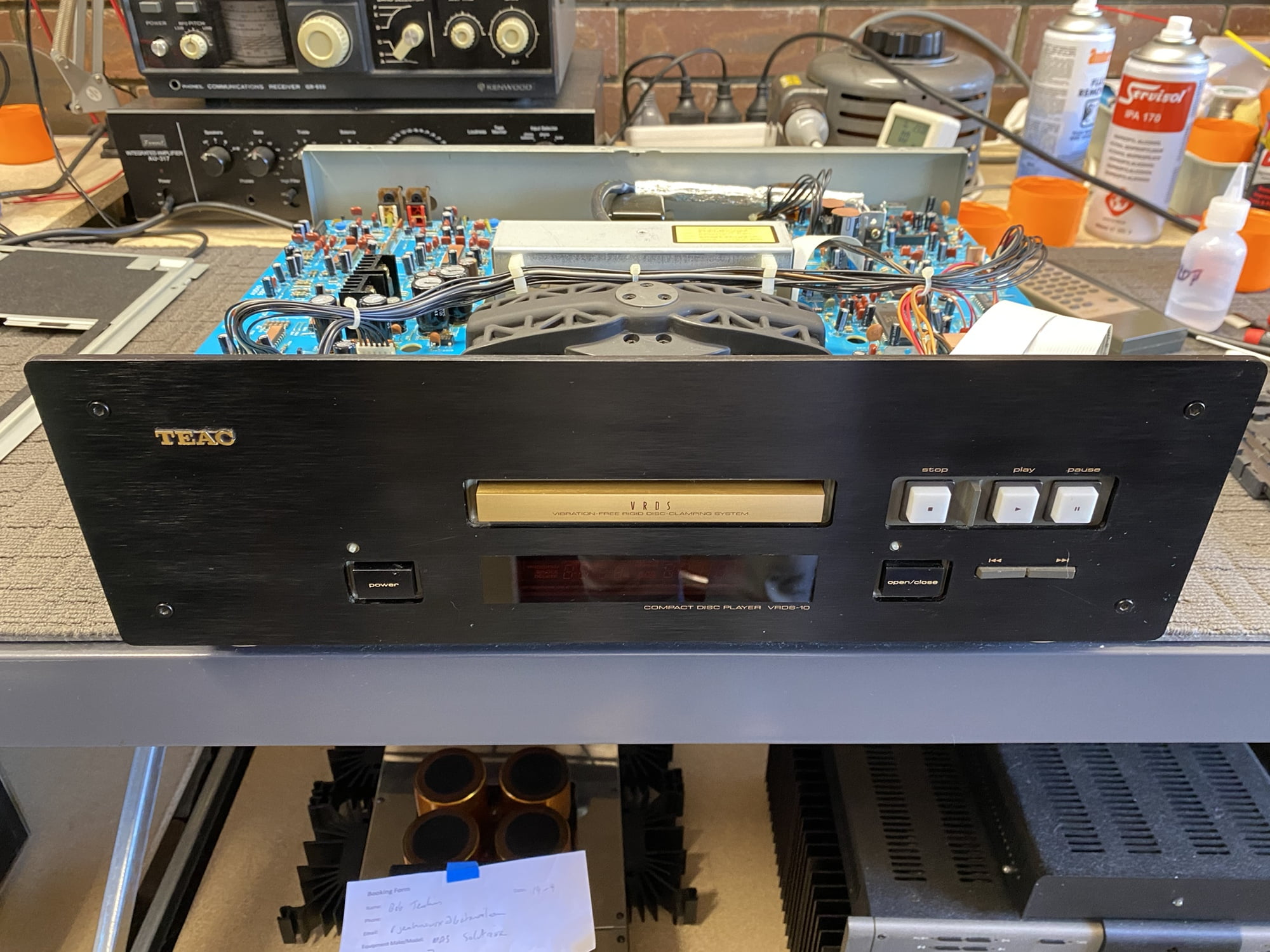
Results
This TEAC VRDS-10 now works perfectly again, a great result. I got some great feedback from the owner about the machine. He seemed most impressed by the fact that she works smoothly and sounds quite a bit better, no doubt due to the service and power supply repair. He felt she sounded somewhat veiled before the repair and service, less so now, so that’s great.
In terms of outright performance, it’s fair to say she is limited by her TDA1547 DAC chips. As I mentioned previously though, they have a sound of their own that some like and she still sounds great. This only confirms that the whole is always more important than the sum of the parts.
To buy a player built like this now would cost many thousands of dollars, so I always feel it’s best to keep equipment like this running and enjoy it, while we still can! You can add a nice external DAC and you’ll have a high-performance player, far better than sub $2000 players now, as long as you use a semi-decent DAC like a PS Audio NuWave DSD for example.

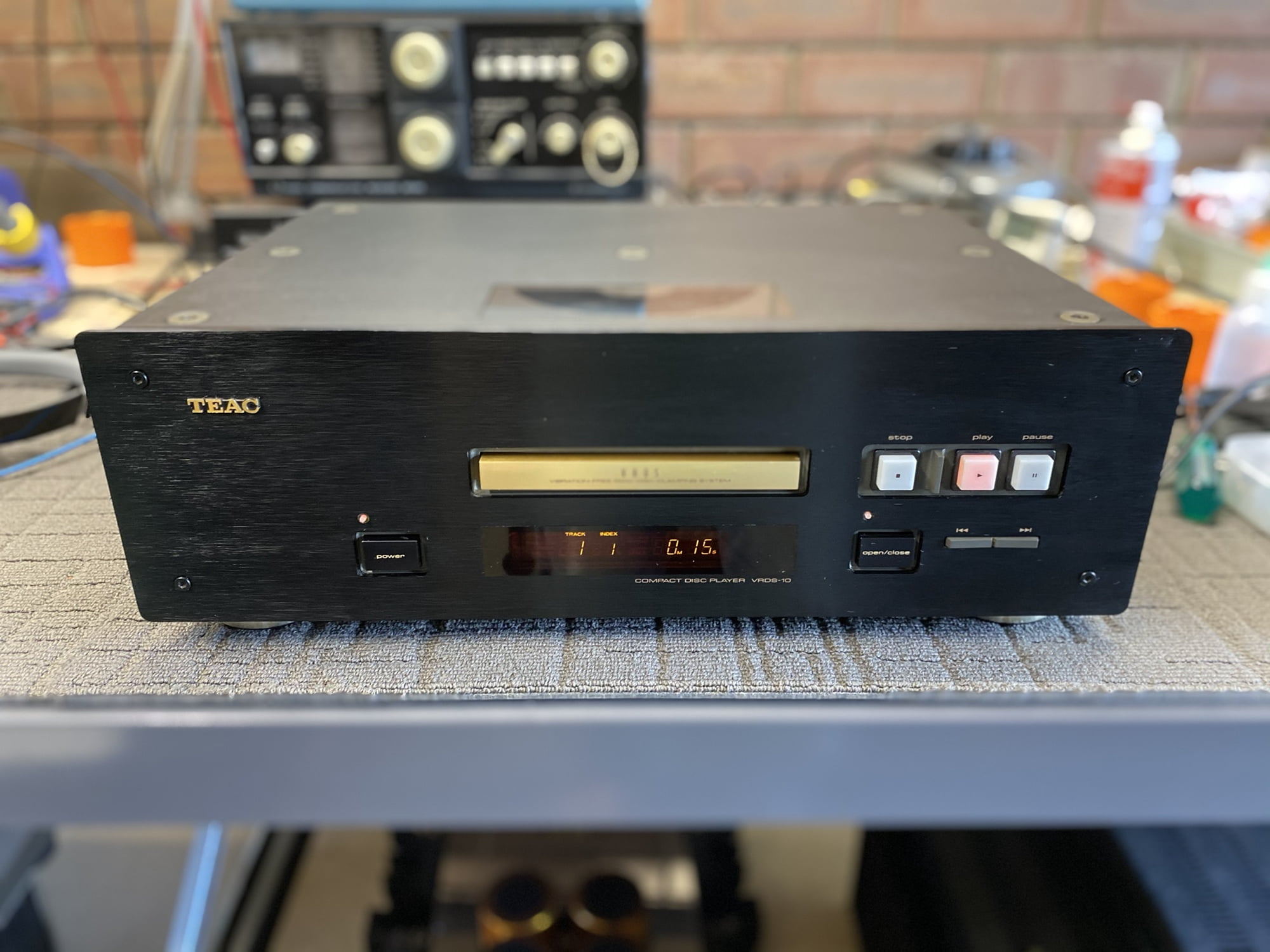

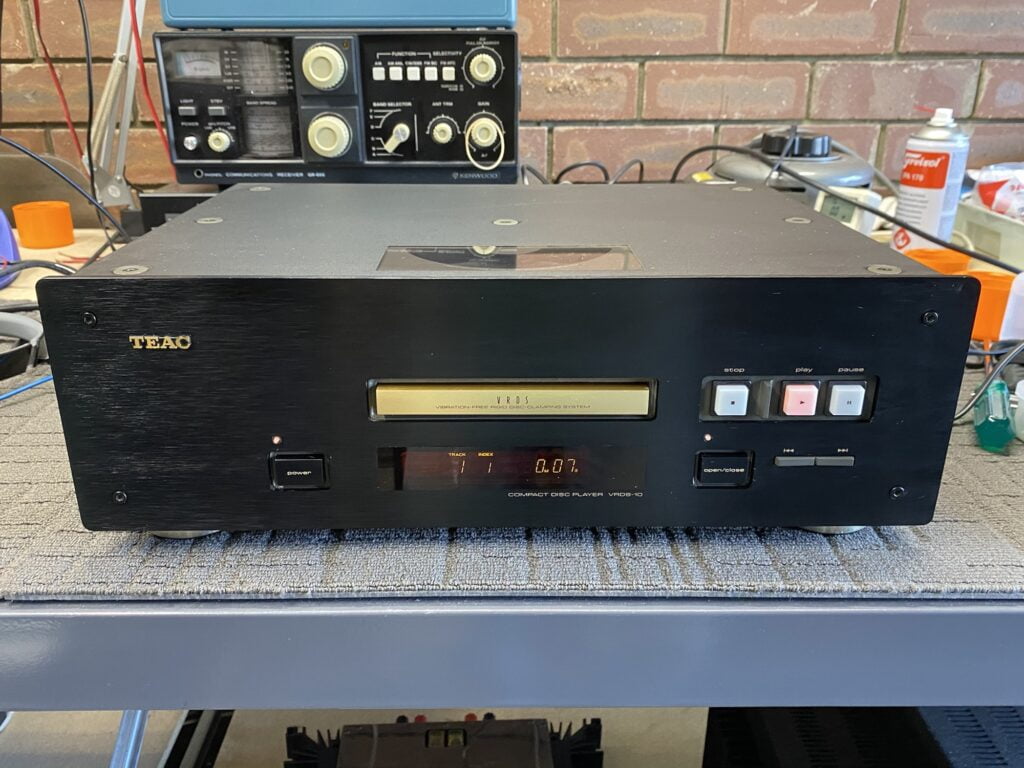
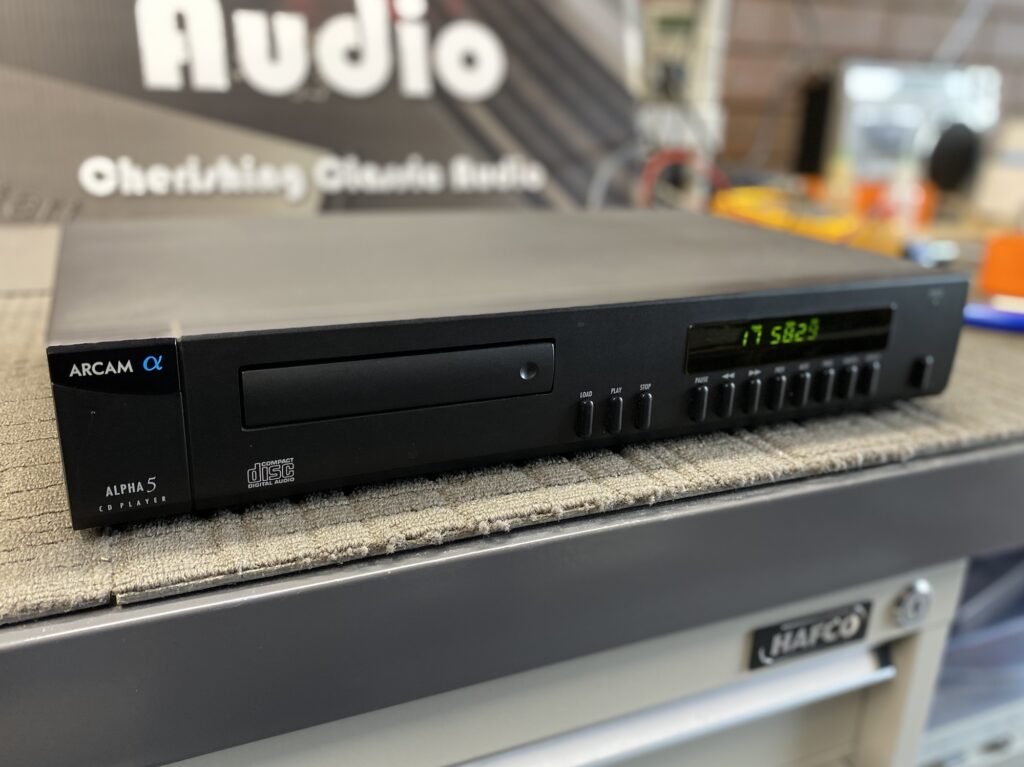
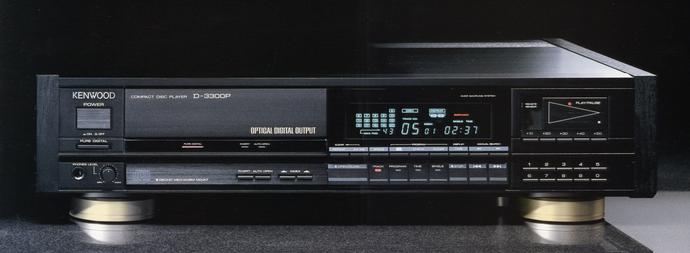
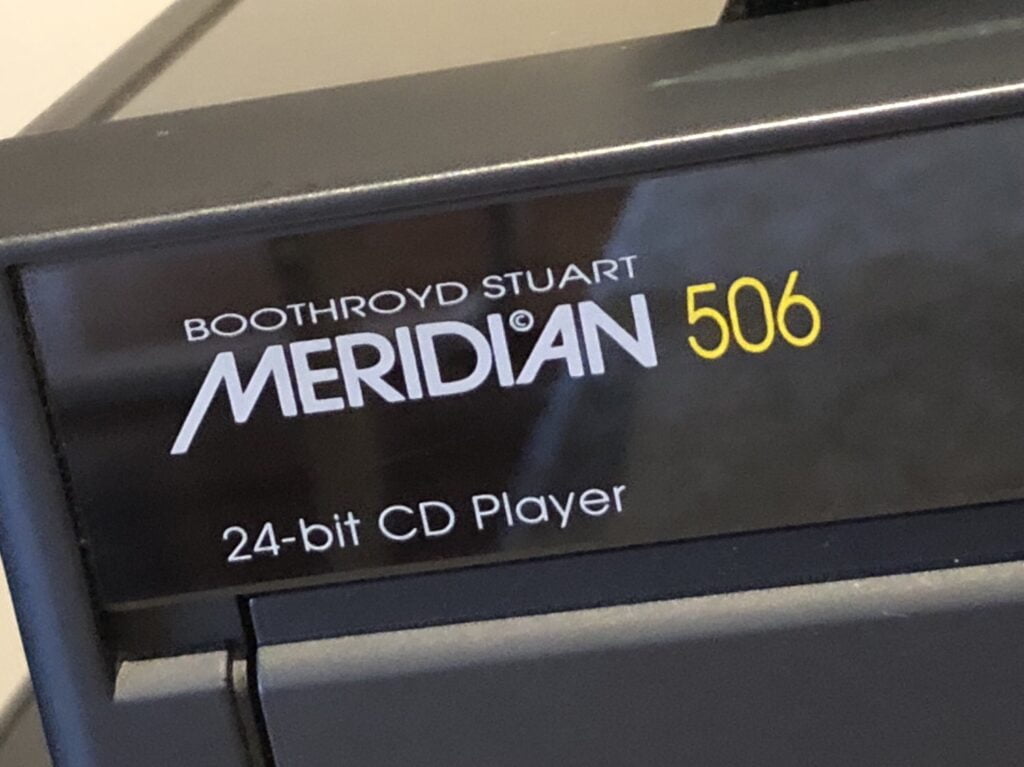

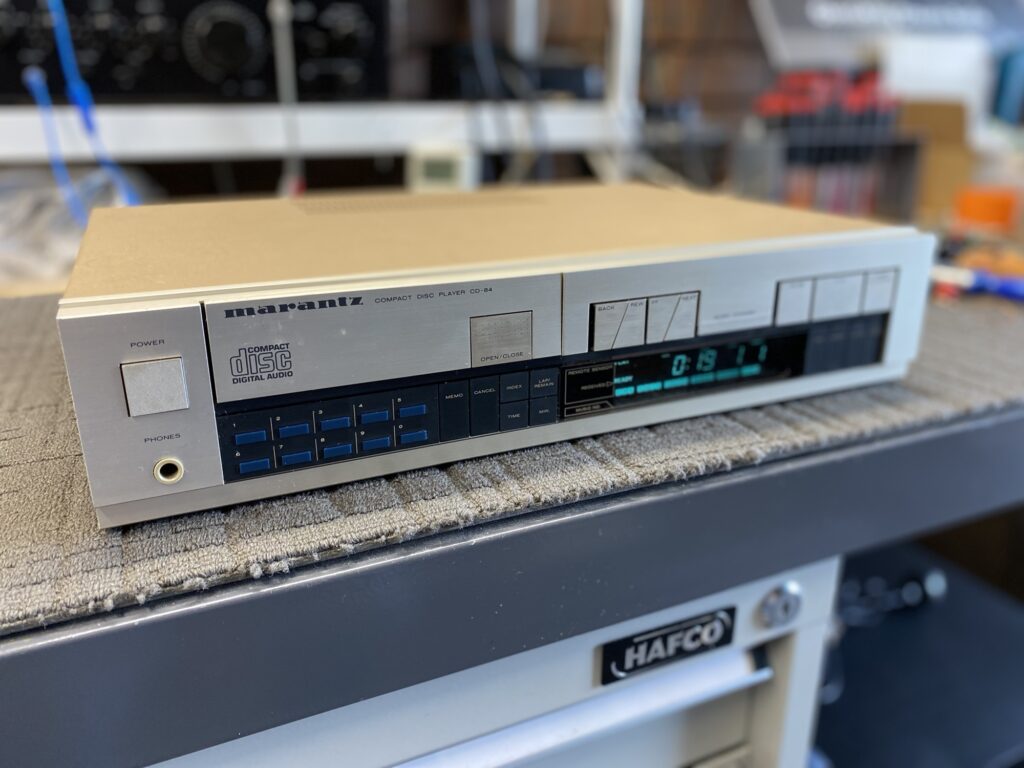
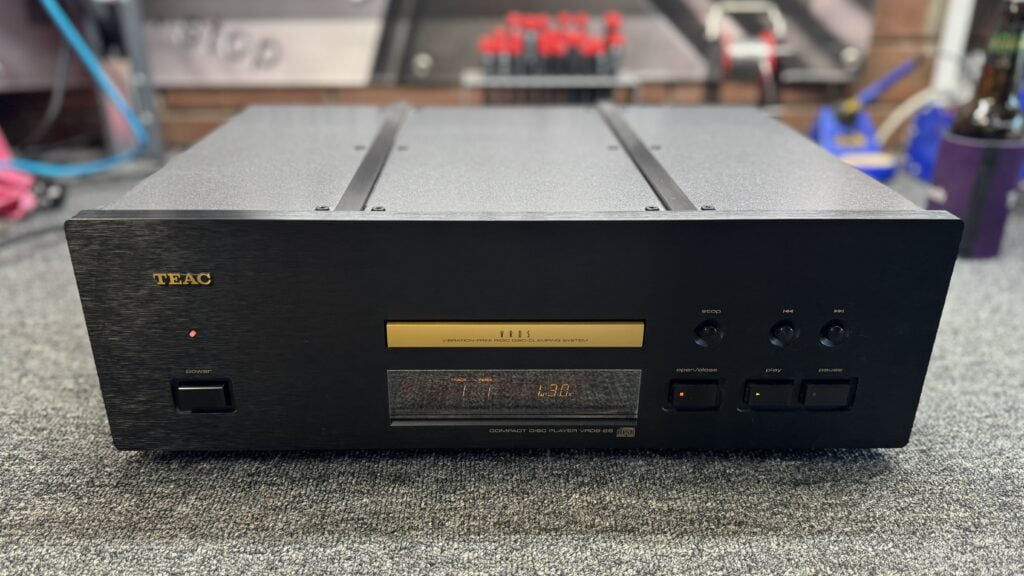
The TDA1547 chips are now considered some of the best sounding. https://theartofsound.net/forum/showthread.php?50465-Hand-Built-DAC-based-on-Phillips-TDA1547-chip-with-upgraded-components
This really depends on who you speak to, but many of us who listen to these things for a living would disagree. Thanks for your comment though, this highlights the sometimes vastly differing opinions you can find out there. I’ve updated my article to reflect this point.
Thank you mike . I’m very pleased to retrieve my porcupine tree CD . Voyage 34 ! One of my favourites. I’ve been playing the ole girl vrds 10 now for a couple of months and she’s not missed a beat . Sounds better than ever. Loved the video can’t thank you enough !
Hi Chris, fantastic stuff and thanks for the feedback. She really is a lovely machine and I’m only too happy to have repaired her for you! Don’t hesitate to let me know if there is anything else I can do to assist.
Hi, I have a Esoteric x03se with a vrds neo drive and the trey is stuck closed because it has been in a humid environment Florida so i suppose the belt is gummy or broken.
What is important to lubricate (and what should i use) and what kind replacement belts should i use ( length and type) for the trey and clamp belts. I think there is only two belt i have seen in these vrds repair videos. Thanks for the great repair page!
Hi Tonto, you are most welcome, sounds like she needs major service, technical enquiries like these can be made through my contact page.
Having had many and still have some types and versions of VRDS drives, I’d say the VRDs10 CMK 3,2 drive is a good one, albeit some esoteric versions are finetuned, say the one used in for example Spectral SDR-3000. Anyway, some of the sound problems experienced in a VRDS10, 15 or 20 and even 25 (and 25x) can be overcome by installing far better clocks and power supplies., upgrading transformers, condensators etc. Even just the clock and a separate power supply for that, is a very good upgrade on a VRDS-10 and 10SE.
For the moment, I am rebuilding one of my Copland CSA-288 Mk. II S.E (A truly serious upgrade from the already good CSA-288, and far better than CSA-289 with it’s sony drive which Copland used when Teac ended selling VRDS to other brands) to include a modded VRDS-10 drive. That is going to be a killer machine. I’d like to get the aforementioned Spectral SDR-3000 Esoteric drive, which is even better. and certainly better than my TEAC P500 and P700. Same goes for TEAC P30 which is a VRDS-10 plus a far better powersupply etc. It does use however a strange reclock, which I am not a fan of. So did VRDS-25x. If one is hooked on a VRDS25, then get that, instead of a VRDS-25x.
So, go for the VRDS-10 – and use a super dac. That ‘s the way to get very close to HiFi nirvana. If possible, the voltage for the KSS-151a should be measured and if at all possible, turned a little bit down. This will enhance the already very long service life of the laser diode. On the CMK 4,0 drive although it’s plastic, it sounds great, the KSS-240 laser looses it’s suspension and cannot reach the reading position, so have to be changed. Cheap and easy to get. Changed a lot of these on some of my own machines and some friends as well. Remember to index the tray correctly. And on that CMK 4,0 drive the rubber surface on the tray crumbles over the years. Just use isopropyl alcohol to remove it. It doesn’t degrade the sound.
On some drives Teac (Esoteric) updated the VRDS bridge from metal to a composite, which actually sounded better. All metal is not always the way to the top, albeit it depends how it’s made.
Btw. if you fancy that smart little window on the top lid of the VRDS-10, by all means stick some black carton to the underside of it, to shut out all light that would pass into the machine and make the laser confused, thereby sending the error correction on work). Better sound. That is why they droipped it on the SE model and others.
Kind regards.
Jacques
Hi Jacques, my pleasure, glad you enjoyed the article and thanks for sharing your thoughts.
Hi Mike, I’ve just hunted down a VRDS-10 with stuck drive issues and went ahead with the purchase after reading your article on the service, which has given me the confidence to attempt the work myself. Thanks for putting in this massive effort to share the work you carried out in such great detail. Karl, Edinburgh UK.
Hi Karl, thanks mate and my pleasure, glad you found the article useful, hope it’s not too cold up there!
Hi Mike, Ahead of my unit arriving, I was wondering if you might be able to confirm the details for resistor that you replaced as I fully anticipate this may be needed with mine or if not it is likely to be something I should do to elevate it away from the board as you did to reduce any heat damage going forward. I’m not bad with a soldering iron having recently done some quite delicate soldering when I rewired an RB250 tonearm. But I’m not an electronics expert like you so any additional info would be welcome. I’ve ordered the fibreglass pen you recommended. I currently work in IT and am well used to stripping down anything from rack mount servers (big stuff) to replacing iphone screens etc (small stuff) so I’m confident in being able to strip the unit and put it back together again. I like fixing stuff and folk like you who take the time to share their knowledge are worth their weight in gold. Keep up the good work and thanks man. Karl
Hi Karl, I don’t recall the details but appreciate the kind words. You’d be surprised at how many use the information we provide and never even think to say thanks or make a donation, so I genuinely appreciate that feedback!
Hi Mike, I just thought that I would let you know that the round about way that I arrived at your site meant that I didn’t land on your homepage and ended up directly at the page detailing the fix on the vrds-10, but this page doesn’t have any link to your donation option. You might want to pepper that through all your pages and then like for me, if the repair works out for me I’ll most certainly be buying you a pint. I’ve found the link now by jumping to your about me, but other visitor might need this placed at the bottom of each of your amazing help pages to let them know how to say thanks. Cheers man. K
No worries Karl and thanks for that excellent feedback, a great idea for sure. I have home and contact page buttons and a few elsewhere, maybe I need a few more. I encourage the concept of donating for the benefits people get from what we do and as a way to show appreciation, especially given that everything is freely available and from a specialist source, very unusual in hi-fi. The problem is this relies on goodwill and, even where I do have buttons on my most read articles, people don’t use them! The articles aren’t really designed to encourage home repairs, they are mostly about raising awareness around beautiful, classic hi-fi gear and highlighting the role a good technician plays in keeping it running well. So, if you’ve enjoyed the site, if it’s helped in some way, or if it’s led you to purchase something, those are actually great reasons to buy me a beer! Any service and repair work is beyond my control unless I do it, of course. Thanks again for visiting and good luck with the VRDS-10!
Hi Mike, You’re lengthy article saved me a ton of time working out what my player needed and it is now playing like new through my Cambridge Audio Azur Dacmagic and is so much better than the Micromega Stage 1 that it replaced. The VRDS-10 came apart and went back together without any drama and to say i’m happy is the understatement of the decade. As promised I left a donation to say thanks. Karl from Edinburgh.
Hi Karl, thanks for the beer and this is great news. Very pleased to know the article helped and yes, the VRDS-10 is in another universe to the Micromega. Now you just need a better DAC, the difference that will make will be even more significant!
Sokan csak két nyitott füllel és nagy kedvvel állunk a hifi-hez és ezer köszönet érte Mike, hogy komoly szakmai hozzáértéssel és sok szabadidőt áldozva elkészíted ezeket a cikkeket és videókat!
Laikusként is öröm nézni!
Köszönjük!
In English:
Many of us only approach hi-fi with two open ears and a lot of enthusiasm, and a thousand thanks to Mike for preparing these articles and videos with serious professional competence and a lot of free time!
Even as a layman, it’s a pleasure to watch!
Thank You!
Thanks Viktor, much appreciated!
Hey there, i have a VRDS 10 which I have loved for many years and currently have hooked to a Chord mojo DAC. I know that digital tech has moved on and the TOSLINC optical and digital connections are seen as not as good as USB (I think) because USB uses the clock of the DAC not the transport. Is this something that can be improved / addressed on the TEAC as a transport? Im just curious. Thanks again for your youtube content – i love it!
Hi Simon, thanks for your question and for visiting AND for your very kind words about the YouTube channel! Lovely transport the VRDS 10. Whilst one can make a case that USB and ethernet connections are better for digital audio, you can only use the best output your machine has, or get something different. I recommend using the coaxial digital output which has the wider bandwidth of the two, and connecting her to the best DAC you can lay your hands on. That’s what I do for CD playback and it works superbly. You can also look at improving your player’s clock, as this can make a significant difference in players with poorer clock precision.
love reading this. thank u. can u please tell me what laser lens. 2 get 4 my Es’ P-10. thank u again.
The Esoteric P-10 uses the Sony KSS-151A. https://www.hifiengine.com/manual_library/esoteric/p-10.shtml
Thanks Robert, same as the P-30.
Hi Mike, I have just visited your website and enjoyed your video about the VRDS10. Thanks, it is great to find someone who is willing to share info in such a friendly way, and obviously helpful too, from a technical point of view. I have 2 of these. One I bought from new , and one that was given to me a few years ago, and not working. My original new one is still in my system and working, but intermittently skipping now. I am a retired audio tech and haven’t touched one of these for many years including my own which I did service a couple of times. You’re right, the mech is superb build design and quality, and they are a PITA to service. I’ve serviced and repaired many cd players, but am way out of touch after 10 years of retirement. I would like any advice you can give me, and I’ll have a go at it. ( I’d get you to do it if I was in WA) Could you supply me those two notorious belts and other parts if needed.
Sorry, this got a bit long, but thanks, and Regards, Barry Clarke
Hi Barry, thanks for your kind words and I’m glad you found the article and video helpful and informative. I’d love to assist with your repair but I generally don’t get too involved in helping people fix equipment, for various reasons including the challenges involved with remote assistance. In terms of parts, we don’t offer retail sales on service parts so unfortunately I cannot assist there. You may find people selling these parts online though. In terms of service pain, having repaired and serviced quite a few of these now, I don’t find them as bad as I once did, but they are fiddly. My advice, if you are confident with CD player repair, is to dive in and stick with it, these aren’t too bad once you get into them!